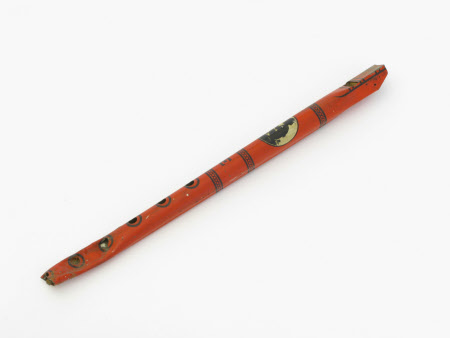Tin whistle
Category
Musical instruments, devices and recordings
Date
Unknown
Materials
Metal, wood and paint
Measurements
15 mm (Width); 222 mm (Length); 13 mm (Diameter)
Order this imageCollection
Tyntesfield, North Somerset
NT 28211
Caption
The tin whistle could be bought for an old English penny which is why it became known as the ‘penny whistle’, and this particular item can be seen at Tyntesfield. The first tin whistle was produced by Robert Clarke in 1843 in Coney Weston, a small village near Bury St Edmunds. Robert, a humble farm labourer and talented amateur musician, learned to play on a wooden whistle. His invention of the first tin whistle became so popular in England he went on to set up a successful business in Manchester. The Clarke Pennywhistle Company still produces penny whistles today and has influenced many famous musicians. James Galway, the famous flautist, first learned to play on one of Clarke’s penny whistles.
Summary
Red painted metal penny whistle with five fingerholes. Bottom squashed and broken. Silhouette of a boy playing flute on top. Marked in black paint; E.
Provenance
Purchased from the estate of the late Lord Wraxall with the assistance of the NHMF and donations from members and supporters.
